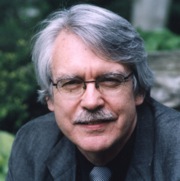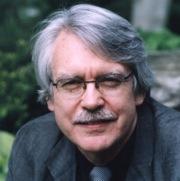Music sounds different when the composer’s in the room. It sounds even more different when he’s sitting near you and hands you a score. That was the predicament in which I found myself Sunday afternoon, at the San Francisco Contemporary Music Players’ “Contemporary Insights” lectures.
Having a score to follow always helps a listener (one who can read musical notation moderately well) to understand and focus on the music, and with one of the most decorated living composers sitting just two seats over, there’s a pressure to concentrate. This is how good music should be experienced: with the maximum amount of focus on the intentions of the composer and performer — not as background or divertissement.

This is one of the more valuable aspects of SFCMP’s mission: performing the music of living and present composers, thereby restoring the triangular relationship between audience, performer, and composer and enabling the three to interact. When the composer is present, the audience seems to be more willing to give him or her the benefit of the doubt, at least initially, out of politeness. This window of attention generally leads to greater appreciation.
Sunday’s lecture was more than a preconcert talk. About 40 people showed up for a trial performance of John Harbison’s work The Seven Ages. Mezzo-soprano Pamela Dellal, conductor Sara Jobin, and Harbison himself all gave their insights, mostly relating to the poetry of Louise Glück. Movements were repeated, and questions were answered.
Harbison didn’t try to sell his music as passionately as a less-well-known composer might, though he did acknowledge some of the tone painting, as well as the balance between connection to the text and cliche. Jobin referred to the piece as a journey from the Garden of Eden through Dante and ending in Buddhism. Harbison disclosed some hidden musical quotations and revealed some of the dry wit in the poetry and the music. Sunday’s extra event was a testament to both the audience’s and the organization’s commitment to new music.
A Fresh Look Back
The actual concert took place the following evening, at Herbst Theatre. The first half of the program began with the U.S. premiere of Edmund Campion’s 600 Secondes dans le vieux modèle (600 seconds in the old model), which was balanced like a standard three-movement classical piece: beginning with a tense first piece, centered by a slow piece, and finishing with a lighthearted finale. What is by now referred to as the “old” or “worn-out” model, as Campion explains in the program notes, is actually integral serialism (that of registers and durations, as well as of pitches).
Only with groups like SFCMP can such a 60-year-old technique pass as “old.” Listening to the piece, however, gives no sign of the postwar avant-garde’s aesthetic. The piece starts with a frenzy and keeps it going for the entire length. Extended technique is used effectively in demarcated sections of col legno, tongue slaps, key clicks, and prepared piano. Thinking of a period of time as “600 seconds” doesn’t sound as long as “10 minutes,” and indeed the piece flew by in an exciting torrent of percussion, intensely palpitating rhythms, and heart-pumping tension. The piece sounded incredibly difficult, but conductor Jobin’s concise stick technique kept the ensemble clicking together.
The contrast in emotion between the frantic 600 Secondes and Morton Feldman’s subdued the viola in my life was lessened by the necessity of a lengthy set change. Nanci Severance took center stage to lead the ensemble in what could be the most exposed series of whole notes ever written. The piece requires a good deal of patience from the listener and a clear, zenlike state of mind. This is rare. I, for one, have trouble achieving that state for one short piece on a Monday night in San Francisco after driving through traffic, with lots on my mind. I envied those who could clear their psyche and fully enjoy the piece.
Although their affect may be quiet and relaxed, a different kind of tension is formed simply by the lack of action and expectation from certain concert pieces such as this. Something should happen! After the 10th or 15th whisper, chairs start to creak, programs start to rustle. By the time a dozen minutes have gone by, boredom starts to torture the mind. When some rhythmic patterns finally started to make their way into the piece, it abruptly ended. It felt like the world’s longest, saddest viola joke.
Flautist Tod Brody was featured next in Steve Reich’s Vermont Counterpoint. The joyously churning celebration of flutes gave a vibrant and rich rhythmic satisfaction. The live flute blended well with prerecorded flutes to form an otherworldly yet still accessible flutter of activity.
After intermission, trombonist Hall Goff joined Chris Froh on chromatic percussion, with Jeffrey Sykes on piano. It was an odd mix, and in the context of the rest of the chamber music concert, the trombone sounded like a brash intruder. Yet the ensemble was able to create an energetic, bustling sound.
On the heels of the previous day’s lecture, Harbison’s Seven Ages seemed like an old friend. The intermittent outbursts of response to the text came through clearly, and Dellal’s tonal accuracy was hard to believe, especially in the more-disjointed melodies.
This concert, titled “From the Top,” featured well-recognized contemporary composers. SFCMP’s next concert, dubbed “Made to Order,” set for Nov. 2, will feature player-specific commissions by emerging composers.

